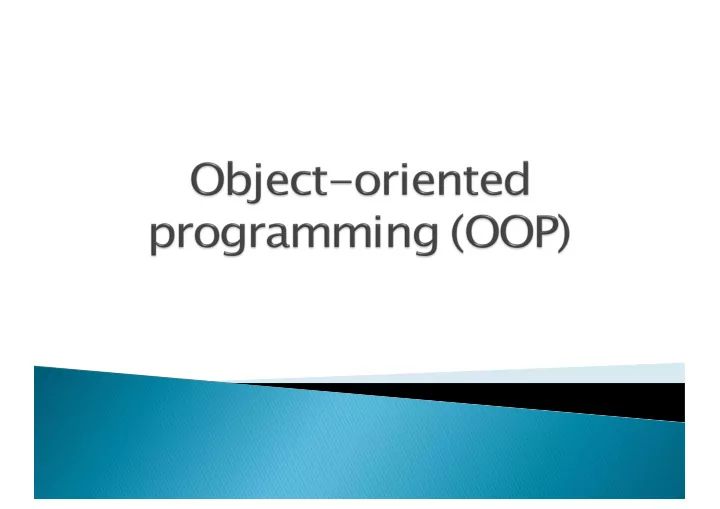

Everything is an object. 1. Objects communicate by sending and 2. receiving messages. Objects have their own memory. 3. Every object is an instance of a class. 4. The class holds the shared behaviour for ist 5. instances. To eval a program list, control is passed to 6. the first object and the remainder is treated as its message.
Ex Example (pseudo-code) Beginner: int a=5 int b=a*a // b=a^2 b=b*b // b=a^4 return b*b // b=a^8
Ex Example (pseudo-code) Advanced: function power2(a) return a*a int a=5 int b=power2(a) b=power2(b) return power2(b)
} Division of a program into different units } Easier to understand } Easier to add functions } Better to reuse data structures } Inheritance of properties
} attributes class car length colour fuel_tank next_service winter_summer } methods drive_a_km change_tires go_to_the_garage Theory Example
length=5 length=3 colour=black colour=grey fuel_tank=60 fuel_tank=45 winter_summer=0 winter_summer=1 next_service=10‘000 next_service=5‘000 drive_a_km drive_a_km fuel_tank-=5 fuel_tank-=2 next_service-=1 next_service-=2
} Names all the } Definition of the attributes and attributes and specific methods. formulation of the methods. Class object
} Possibility to hide certain information or deny access. } public / private } Prevents the external code from being concerned with the internal workings of an object.
} C-languages } Java } Py Python } etc.
Recommend
More recommend